If you're a flowering plant enthusiast, the dazzling crocosmia 'Lucifer' from South Africa is sure to catch your eye!
Its bright red flowers will set your garden ablaze with color throughout the summer months.
These stunning flowers not only enhance your garden's aesthetics, but also attract hummingbirds and other pollinators, making it quite a functional addition too.
Thinking of inviting this vibrant guest to your garden? First, let's look into whether Lucifer plants spread and how they might dance with your garden's balance.
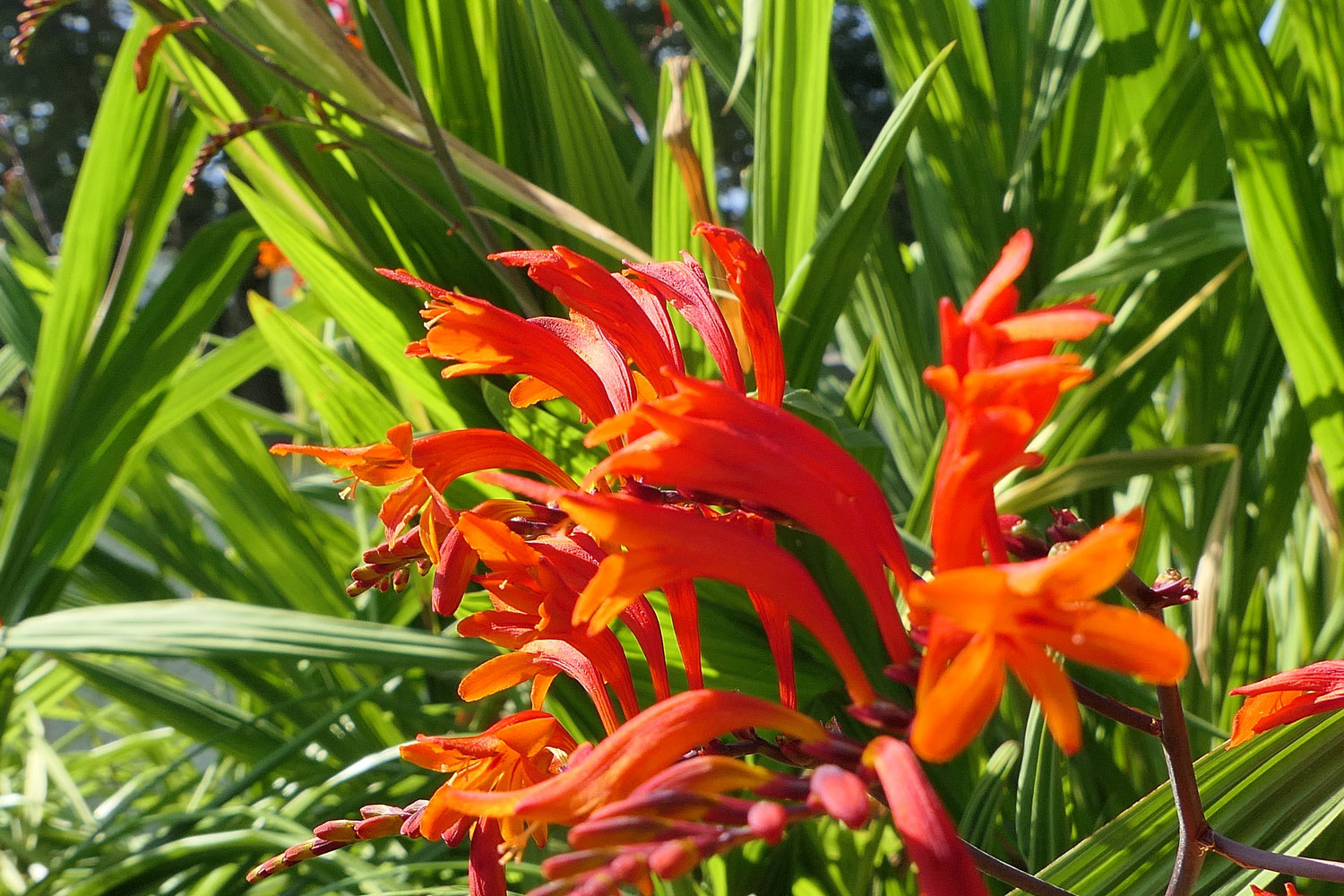
Understanding Lucifer Plants
Lucifer plants, also known as Crocosmia Lucifer, are beautiful, eye-catching perennials native to South Africa.
They grow from corms, preferring moderately moist, well-drained soils, and can thrive in both sunny and partially shady spots.

These striking plants produce brilliant red, tubular flowers arranged in a zigzag pattern along tall, arching stems.
These plants are not only attractive but also low-maintenance, making them an excellent addition to your garden.
They can grow up to 4 feet tall and spread about 2-3 feet wide, adding both height and texture to your garden landscape.
How Lucifer Plants Spread
Here are some of the ways Lucifer plants will spread through your garden. Understanding this will help you know how to propagate and control its growth.
Seed Dispersal
Lucifer plants can spread through seed dispersal. This process occurs when their attractive, bright red flowers bloom in the summer, attracting hummingbirds and other pollinators.
As these birds and insects enjoy the nectar from Lucifer plants and hover around them, they inadvertently help in the transfer of pollen to other flowers.
This results in the fertilization of flowers, and subsequently, the production of seeds.
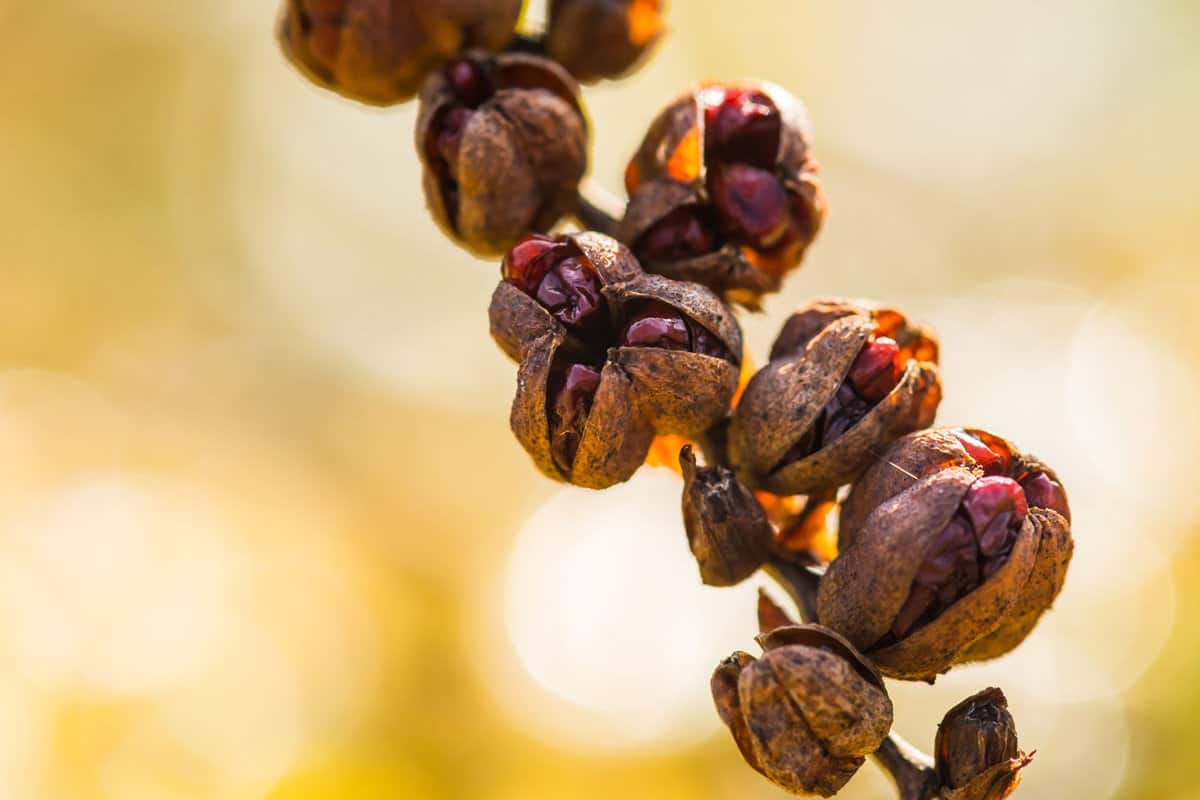
Once the seeds are mature, they fall off from the plant and disperse with the help of wind, water, or animals.
In some cases, you might notice seeds sticking to tiny feathers of birds or fur of animals.
This ultimately results in the scattering of seeds to new locations where they can grow and establish new Lucifer plants in your garden.
Rhizome Propagation
Lucifer plants also propagate through their rhizomes, which are underground stems that grow horizontally.
These rhizomes store nutrients and have the ability to produce new shoots and roots.
As they expand underground, they can give rise to new Lucifer plants in the surrounding area.
To encourage this form of spreading, you should provide the plants with moderately moist and well-drained soils.
They also prefer sun to partial shade, which means placing them in a location where they can get enough sunlight is essential.
Keep an eye on your garden and observe the growth pattern of Lucifer plants to ensure they spread at a manageable pace and don't invade other plant species' territories.
Controlling Lucifer Plant Spread
As a gardener, you may be concerned about the potential spread of Lucifer plants in your garden.
Don't worry, there are effective methods to control this beautiful but potentially invasive plant.
Plan Where You Plant Them
First and foremost, only plant the Lucifer crocosmia in designated areas, such as garden beds or borders.
By doing so, you'll prevent them from spreading unchecked into other parts of your garden or yard.
Watch Out for New Shoots
Keep a close eye on any new shoots or growth and remove them as they appear.
Early detection and a quick response are key to managing the spread of the Lucifer plant.
Prevent Seeding Stage
Another crucial step is to avoid letting the Lucifer plant go to seed. When the beautiful red flowers begin to fade, it's time to deadhead them.
By deadheading spent flowers, you prevent the plant from producing seeds that can potentially establish in other areas of your garden.
Here's a helpful video:
Additionally, try surrounding the Lucifer plants with less invasive plant species to act as a natural barrier.
These plants should be taller and have a compact growth habit to discourage the spread of the Lucifer plant.
Some options include boxwood shrubs or other hardy perennials.
Healthy Growing Conditions For Lucifer Plants
To grow vibrant and healthy Lucifer plants, you'll need to provide them with the right conditions. Here's what you need to consider:
Soil
Lucifer plants prefer well-drained, fertile soil rich in organic matter.
Make sure to work compost or other organic materials into the soil before planting to ensure it remains well aerated and nutrient-dense.
Light
These plants enjoy full sun to partial shade. For the best blooms, place them in a location that receives at least 6 hours of direct sunlight daily.
Water
While Lucifer plants are moderately drought-tolerant, they still appreciate regular watering. Aim to keep the soil consistently moist but not soggy.
To promote a healthy root system, water deeply and less frequently, as opposed to providing shallow, frequent irrigation.
Fertilization
To encourage vigorous growth and blooming, feed your Lucifer plants with a balanced, slow-release fertilizer once a season, typically in early spring.
Spacing
To avoid overcrowding and help the plants spread properly, plant your Crocosmia Lucifer bulbs 4-6 inches apart and 4-6 inches deep.
Benefits of Lucifer Plants in Your Garden
Here's what you can gain by adding Lucifer plant in your garden.
Visual Appeal
Crocosmia 'Lucifer' is a stunning plant that can greatly enhance the visual appeal of your garden.
With its bright red flowers lighting up the landscape during the summer months, this plant can add a pop of color to any garden design.
The unique shape of its flowers, resembling long arching branches with numerous blossoms on each branch, create a dynamic focal point that can draw the eye and serve as a conversation piece.
This South African plant is hardy, so you can enjoy its beauty year after year.
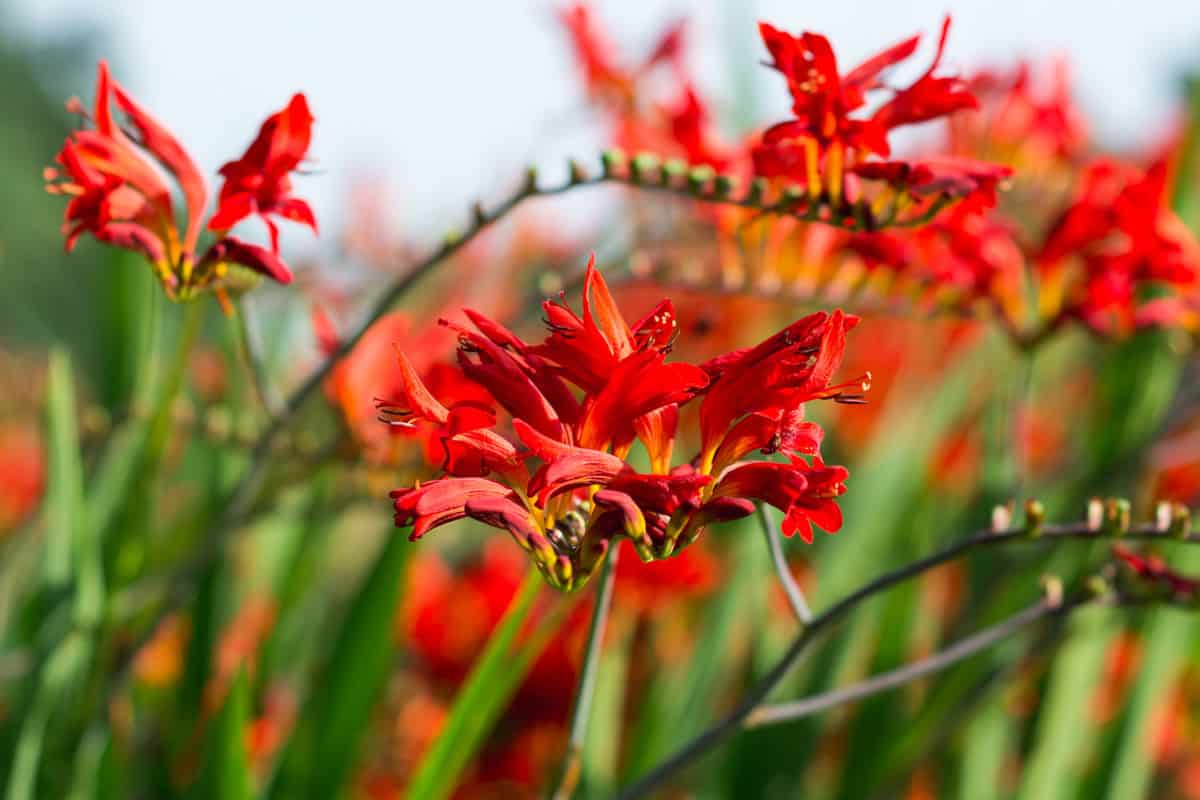
Attracting Wildlife
Another significant benefit of including Lucifer plants in your garden is their ability to attract wildlife, particularly hummingbirds and other pollinators.
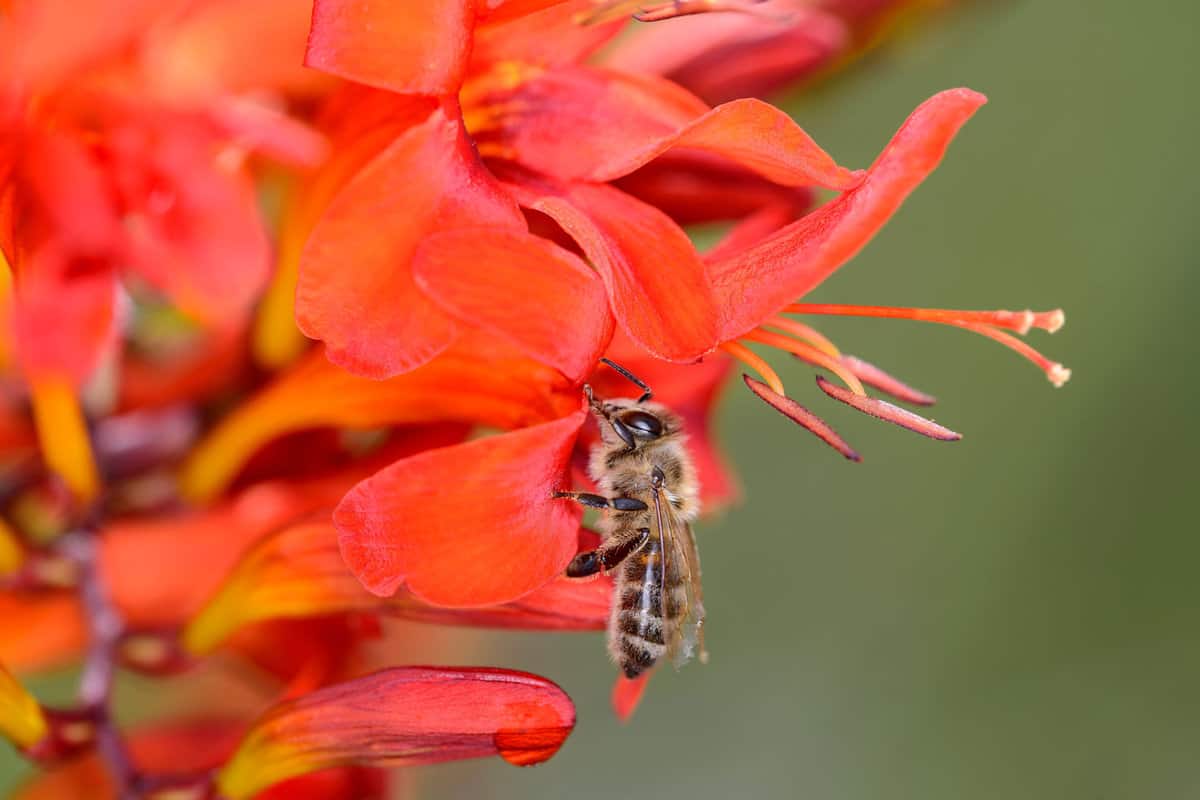
Its flowers act as a magnet for these creatures, providing them with valuable nectar and increasing the overall biodiversity within your outdoor space.
By welcoming these pollinators, you're not only supporting the local ecosystem but also encouraging the health and growth of other plants in your garden.
Potential Drawbacks of Lucifer Plants
While known for their stunning bright red flowers that light up gardens and attract pollinators, they do have a potential drawback: their invasive nature and are potential allergens.
Invasive Nature
These eye-catching plants grow from corms, which can multiply quickly when given optimal conditions like moderately moist, well-drained soil, and a mix of sun and partial shade.
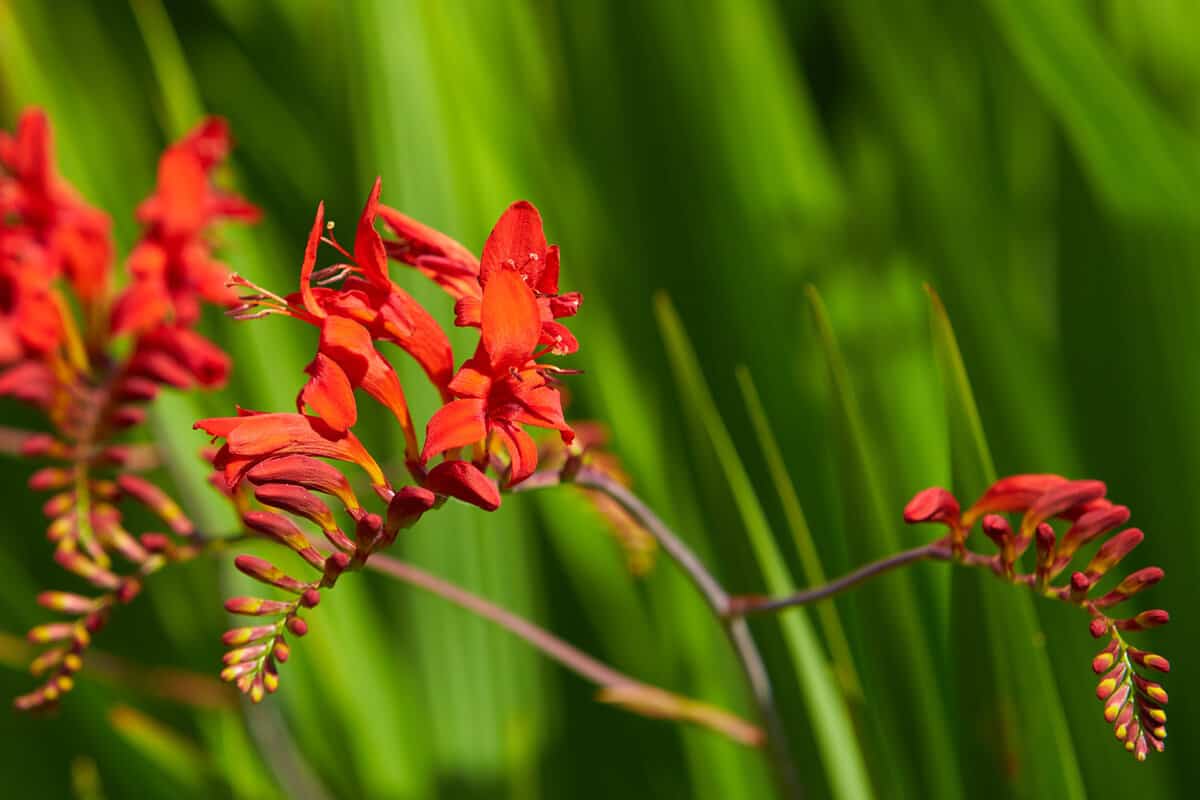
This invasive potential means you need to be proactive in managing their growth to prevent the plants from overrunning your garden. This can be done by:
1. Regularly Removing Offsets
When the plants produce new corms, remove them to control their spread.
2. Planting in Containers
Growing Lucifer plants in containers can help manage growth and prevent spreading.
3. Using Barriers
Installing underground barriers around the plants can help control their expansion within your garden.
Potential Allergens
Although it is not very common, some people may be sensitive or allergic to Lucifer Plants.
Skin contact with the plant may cause irritation, and pollen from the flowers might lead to allergic reactions in susceptible individuals.
To minimize the risk of adverse reactions:
1. Wear Gloves
When handling the plants or working around them, it's a good idea to use gloves to reduce skin contact.
2. Avoid Pollen Exposure
If you are sensitive to pollen, try to avoid the blooms during the plant's flowering season, or consider planting them in a less frequented area of your garden.
Lucifer Plant's Invasive Nature is Highly Manageable
These plants can indeed spread, but with the right knowledge and techniques, you can keep them contained and maintain your garden's beauty.
By being aware of Lucifer plants and their spreading habits, you can continue to build on your gardening expertise and create the peaceful oasis you've always dreamed of.
Looking for more red flower varieties? Check out our lists!
18 Red Peony Varieties You Should Know
12 Plants with Red Leaves: Painting Your Garden in Nature’s Fiery Palette
